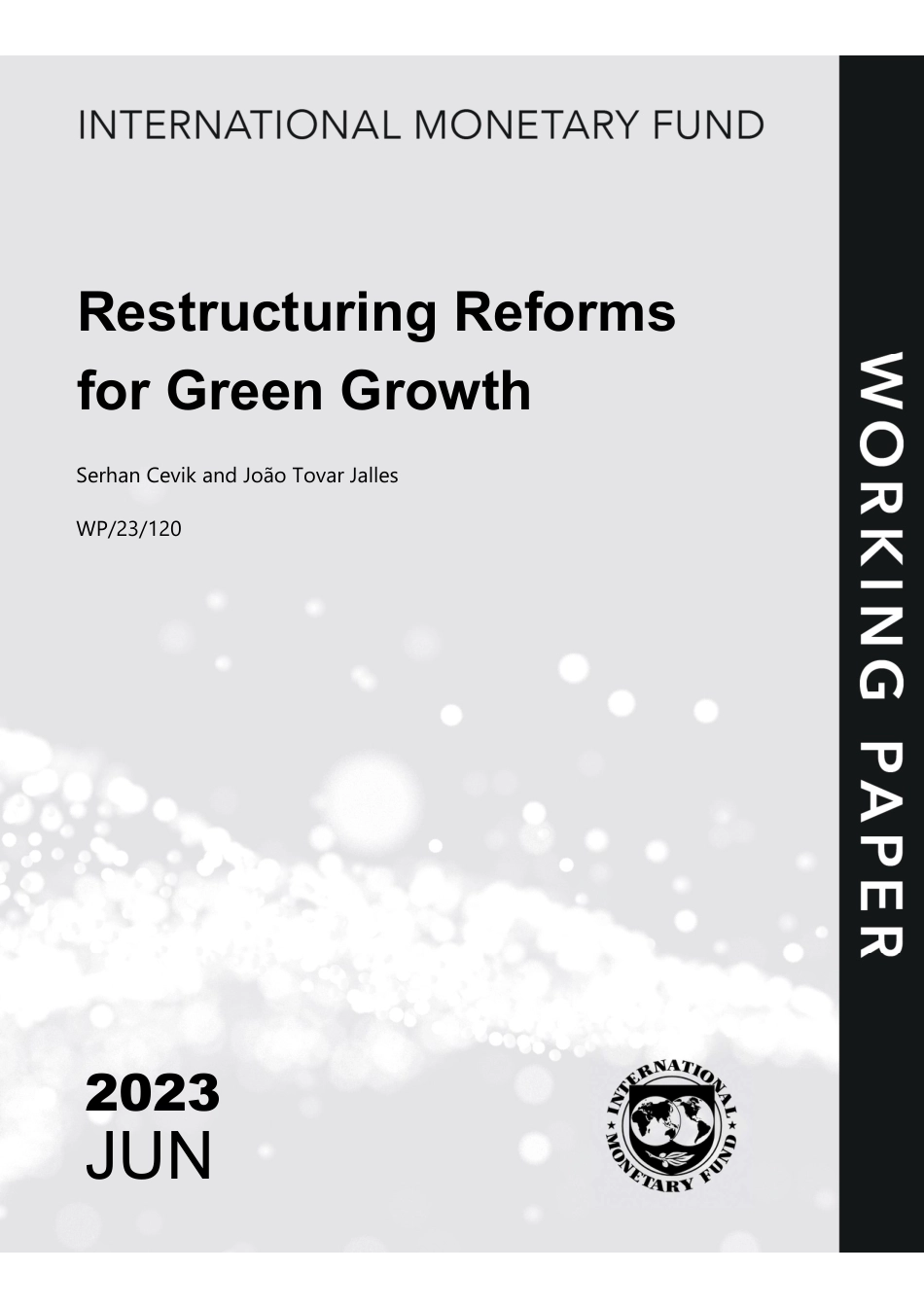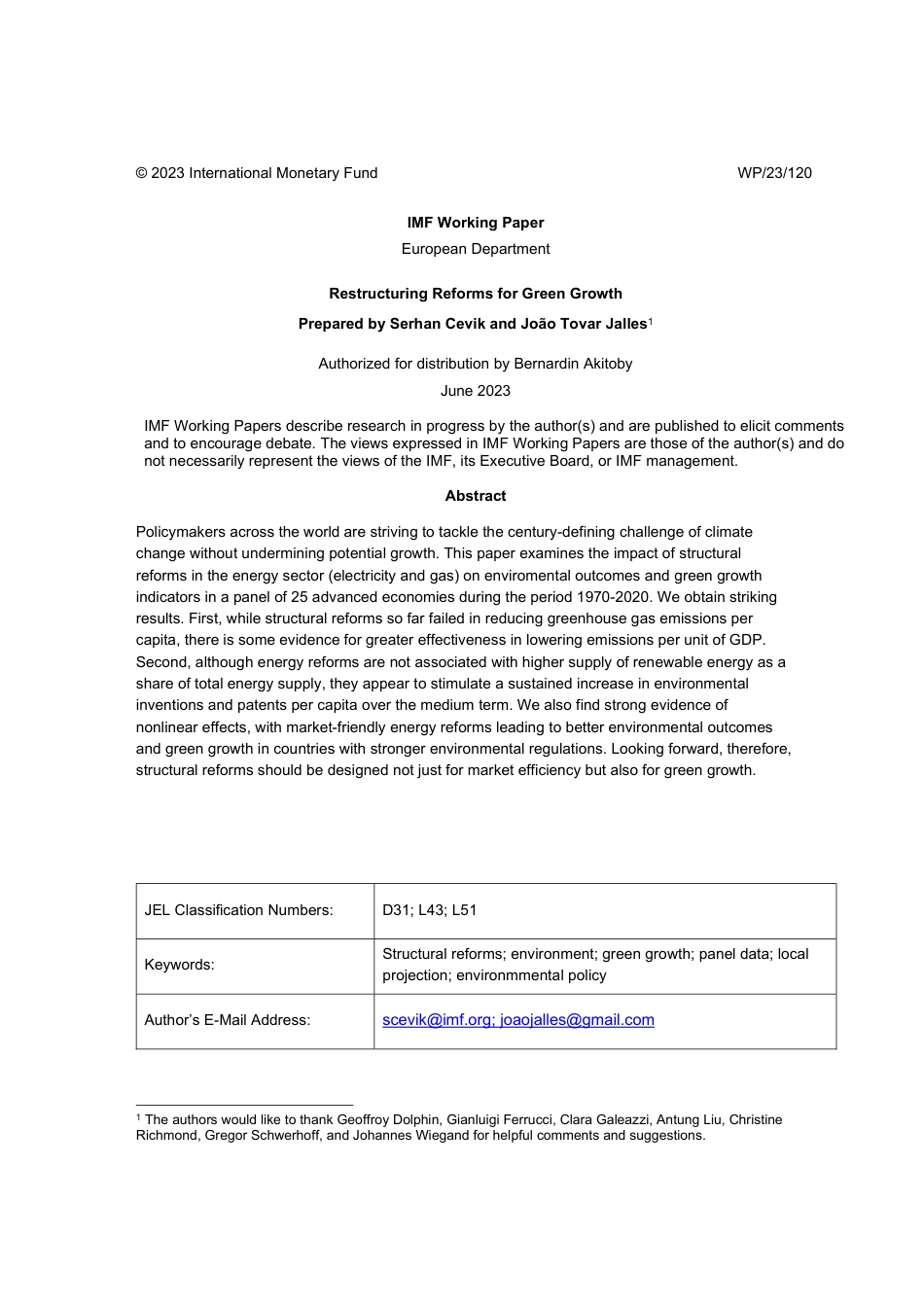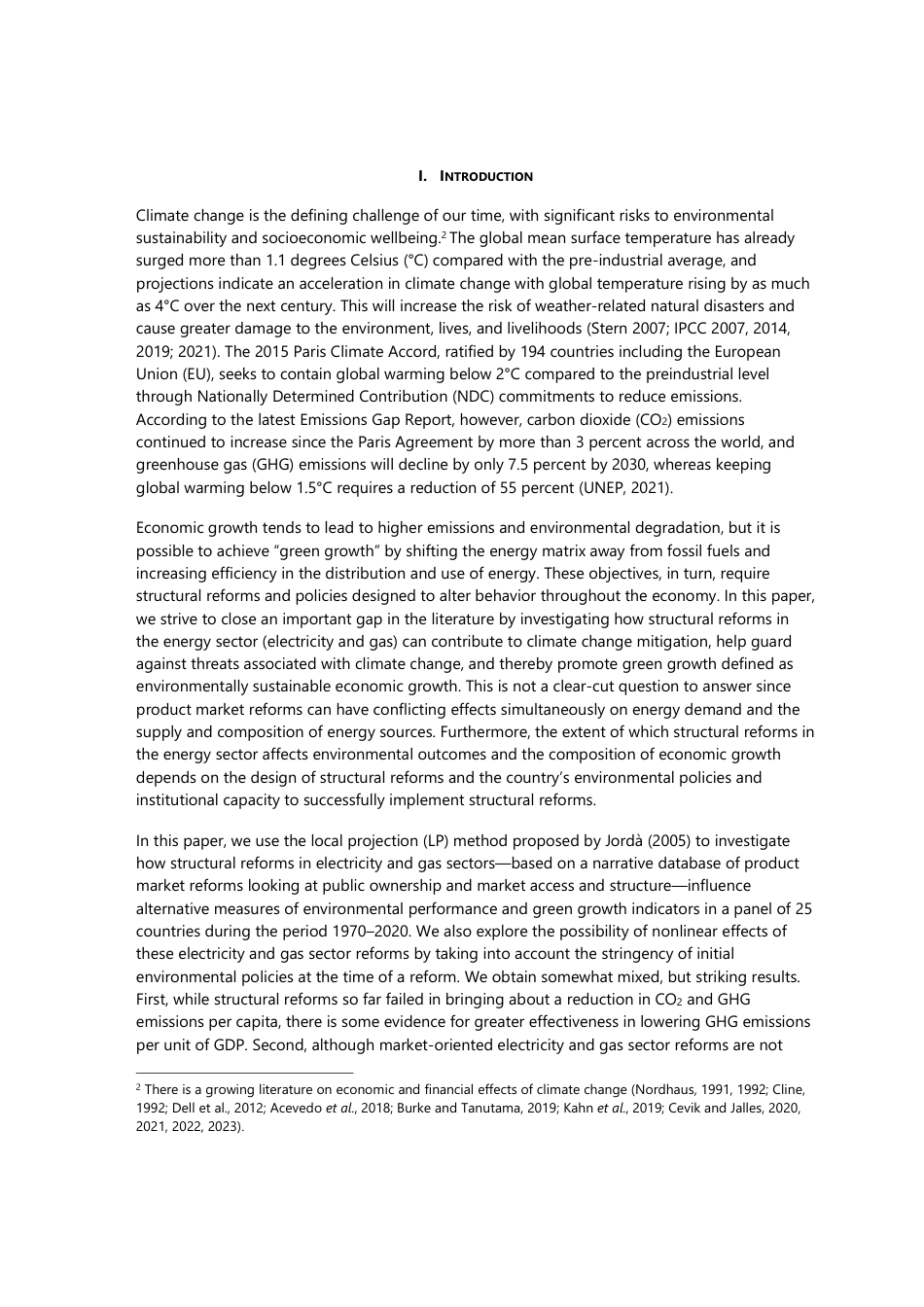2023 JUN Restructuring Reforms for Green Growth Serhan Cevik and João Tovar Jalles WP/23/120 © 2023 International Monetary Fund WP/23/120IMF Working Paper European Department Restructuring Reforms for Green Growth Prepared by Serhan Cevik and João Tovar Jalles1 Authorized for distribution by Bernardin Akitoby June 2023 IMF Working Papers describe research in progress by the author(s) and are published to elicit comments and to encourage debate. The views expressed in IMF Working Papers are those of the author(s) and do not necessarily represent the views of the IMF, its Executive Board, or IMF management. Abstract Policymakers across the world are striving to tackle the century-defining challenge of climate change without undermining potential growth. This paper examines the impact of structural reforms in the energy sector (electricity and gas) on enviromental outcomes and green growth indicators in a panel of 25 advanced economies during the period 1970-2020. We obtain striking results. First, while structural reforms so far failed in reducing greenhouse gas emissions per capita, there is some evidence for greater effectiveness in lowering emissions per unit of GDP. Second, although energy reforms are not associated with higher supply of renewable energy as a share of total energy supply, they appear to stimulate a sustained increase in environmental inventions and patents per capita over the medium term. We also find strong evidence of nonlinear effects, with market-friendly energy reforms leading to better environmental outcomes and green growth in countries with stronger environmental regulations. Looking forward, therefore, structural reforms should be designed not just for market efficiency but also fo...



